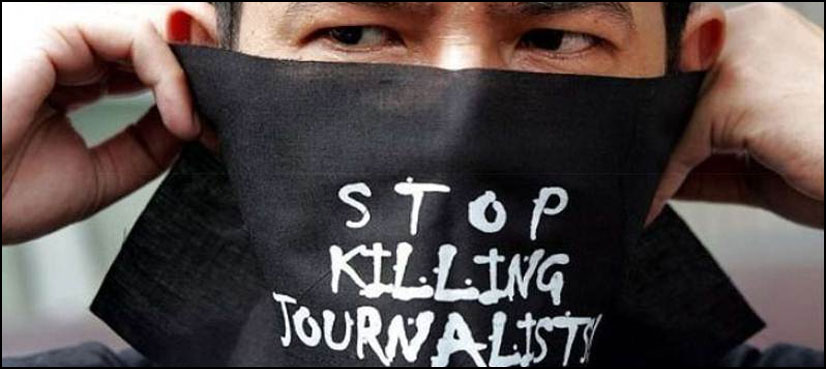A consortium led by investigative outlet Forbidden Stories and involving around 50 journalists from 13 organizations including AFP, The Guardian, and the Arab Reporters for Investigative Journalism group (ARIJ) took part in the four-month probe.
It looked into strikes involving journalists and media infrastructure since Israel launched a devastating offensive in the Gaza Strip in response to the Palestinian militant group Hamas carrying out an unprecedented attack in Israel on October 7.
“More than 100 journalists and media workers have been killed,” Forbidden Stories’ Laurent Richard said in an editorial accompanying the Gaza Project’s publication.
“Today’s Gaza journalists have long known that their ‘press’ vests do not protect them,” he wrote.
“Worse still, the protective gear might further expose them.”
Carlos Martinez de la Serna, of the Committee to Protect Journalists, expressed shock at the toll.
“This is one of the most flagrant attacks on press freedom that I remember,” he told the investigation.
The Israeli military said it “does not intentionally harm journalists, and that journalists may have been harmed during air strikes or operational activities aimed at military targets”.
Supposed to identify and protect us
The probe found that four journalists were killed or wounded by a drone while wearing a press vest.
Fourteen in total were killed, wounded, or targeted while wearing their protective gear describing them as a member of the “press”.
At least 40 journalists and media workers were killed while at home in Gaza, it added.
“Whereas the press vest was supposed to identify and protect us according to international laws… it is now a threat to us,” said Basel Khair al-Din, a Palestinian journalist in Gaza who believes he was targeted by a drone strike while wearing a press vest.
ARIJ also surveyed 239 surviving journalists from June 6 to June 16. More than 200 had been displaced from their homes by the war, it found.
Seventy-two said they had lost family members. Of those, 11 reported their children had been killed.
As part of the probe, AFP looked with other media into a strike on its Gaza bureau on November 2, after its staff had evacuated but while it was still broadcasting a live stream of the war from a camera on its balcony.
They found the strike to have been caused by an Israeli tank likely.
The Israeli military has said the bureau was not targeted but damage to it could have been caused by a “shock wave or shrapnel” from another attack.
AFP global news director Phil Chetwynd has called for an “apparent and transparent investigation” from the Israeli authorities into the incident.
Completely unacceptable
He also said that more than 100 journalists and media workers having been killed in the Gaza Strip in such a short time was “completely unacceptable”.
“And the thing that worries me most is that it’s not causing a scandal. Around the world I don’t see the voices of the various governments complaining,” he added.
Shuruq Asad, the spokeswoman for the Palestinian Journalist Syndicate (PJS), said more than 70 media offices had been bombed since the start of the war and she too was taken attack by the lack of global outrage.
“I don’t think this would be the reaction of the world if there was 100 Ukrainian journalists killed,” she said, referring to the Russian invasion of Ukraine.
Mutib Khalid is a skilled content writer and digital marketer with a knack for crafting compelling narratives and optimizing digital strategies. Excel in creating engaging content that drives results and enhances online presence. Passionate about blending creativity with data-driven approaches, Mutib Khalid helps brands connect with their audience and achieve their goals.







